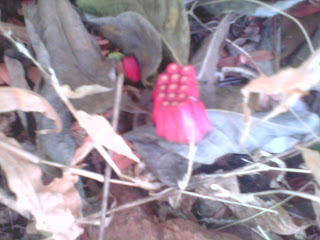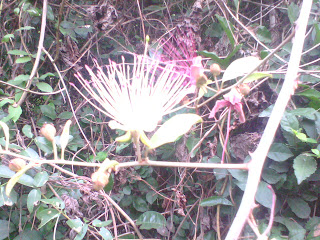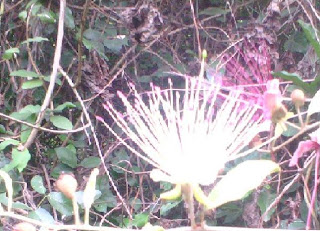 Calotropis procera | Madar | image
Calotropis procera | Madar | image| Scientific classification of Calotropis procera | |
|---|---|
| Kingdom: | Plantae |
| (unranked): | Angiosperms |
| (unranked): | Eudicots |
| (unranked): | Asterids |
| Order: | Gentianales |
| Family: | Asclepiadaceae |
| Genus: | Calotropis |
| Species: | C. procera |
Common names :-Hindi. Madar; Marathi. Mandar. | |
An erect shrub with milky juice; common in the dry parts of the State.
Dried leaves are eaten by sheep and goats.
Plant Description: Calotropis procera is a woody perennial plant that can grow up to 4 meters (about 13 feet) in height. It has thick, fleshy leaves that are lance-shaped and arranged alternately on the branches.
Flowers: The plant produces distinctive, large, and showy flowers that can be white or lavender in color. The flowers have a five-lobed corolla and a central crown-like structure.
Fruit: The fruit of Calotropis procera is a large, inflated, and spiky capsule. Inside the capsule are numerous seeds attached to silky fibers. The fruit and seeds contain latex, which is toxic and bitter.
Habitat: This plant is well adapted to arid and semi-arid environments and is often found in dry grasslands, deserts, and wastelands. It can thrive in hot and harsh conditions.
Toxicity: Calotropis procera is known for its toxicity. All parts of the plant contain toxic compounds, including cardiac glycosides, which can be lethal if ingested. It is not suitable for human or animal consumption.
Traditional Uses: Despite its toxicity, some parts of Calotropis procera have been used in traditional medicine in various cultures. For example, extracts from the plant have been used topically for treating skin conditions and as a treatment for snakebites in some traditional systems.
Fiber: The silky fibers attached to the seeds have been used for making ropes, strings, and fishing nets in some regions.
Invasive Species: In certain areas, Calotropis procera has become invasive and can be problematic in agricultural landscapes, as it competes with native plants and can be difficult to control.
Drought Tolerance: Calotropis procera is known for its ability to withstand drought conditions, making it a valuable plant in regions with limited water resources.
Other Names: Calotropis procera is known by various regional names, including "Sodom apple," "Apple of Sodom," "Milkweed," "Giant Milkweed," and "Akund."
Calotropis procera is a hardy plant with unique and striking features. However, its toxicity and invasive tendencies make it important to handle with caution and not to consume or plant it in areas where it could become problematic.









